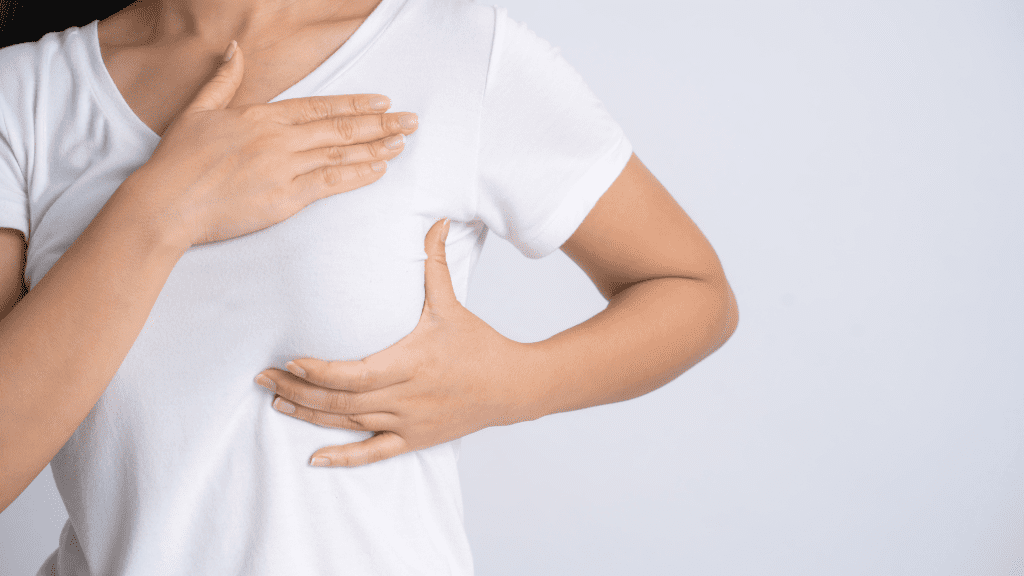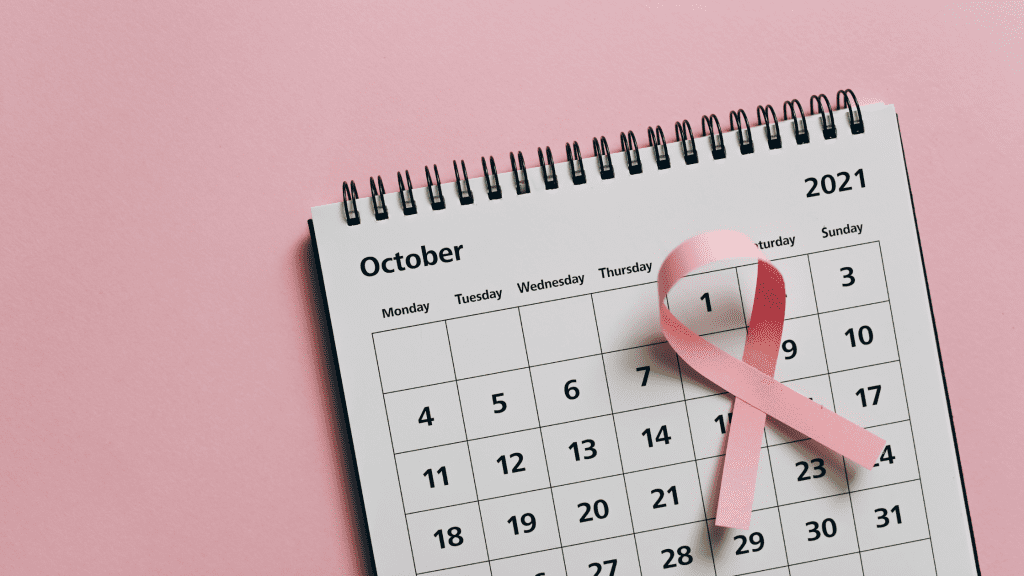Introduction
Breast cancer remains one of the most common cancers affecting women worldwide. According to the World Health Organization (WHO), it accounts for nearly 1 in 8 female cancer diagnoses globally. Despite its prevalence, early detection significantly improves treatment outcomes and survival rates.
Recognizing the early signs of breast cancer can make all the difference. Many cases start with subtle physical changes that are often ignored or mistaken for normal hormonal variations. This guide aims to help you identify these early symptoms, understand their causes, and know when to seek medical advice.
Understanding Breast Cancer
What Is Breast Cancer?
Breast cancer develops when abnormal cells in the breast tissue begin to grow uncontrollably. These cells can form a lump or mass and, over time, may spread to nearby tissues or lymph nodes.
How It Develops
Most breast cancers start in the ducts (ductal carcinoma) or the lobules (lobular carcinoma). While the exact cause isn’t always clear, genetic mutations, hormonal factors, and lifestyle choices can increase risk.
Why Early Detection Matters
Early detection allows for more treatment options, higher survival rates, and often less aggressive therapy. Regular screening, such as mammograms and self-breast examinations, plays a key role in identifying early changes before cancer spreads.

Common Early Signs of Breast Cancer
The symptoms of breast cancer can vary widely. Some women may notice visible changes, while others might experience discomfort or swelling without a noticeable lump. Below are the most common early warning signs to watch for.
1.Lump or Thickening in the Breast or Underarm
A lump is often the first and most recognizable symptom of breast cancer. It may feel:
- Hard or firm with irregular edges
- Painless (though some may cause discomfort)
- Fixed in place rather than moving under the skin
Lumps can appear in the breast or underarm (axillary) area, where lymph nodes are located. However, not all lumps are cancerous — some may be cysts or benign growths. Regardless, every new lump should be evaluated by a healthcare professional.
2.Changes in Breast Size or Shape
If you notice swelling, shrinkage, or distortion in one breast, it could indicate underlying changes in breast tissue. Uneven size or shape, especially if sudden, should not be ignored.
3.Skin Changes on the Breast
The skin on your breast may show:
- Redness or inflammation
- Dimpling or puckering, resembling an orange peel texture (known as peau d’orange)
- Thickened skin or visible irritation
These changes can result from cancer cells blocking lymph vessels beneath the skin.
4.Nipple Changes
Early breast cancer can cause noticeable nipple alterations, such as:
- Inversion or pulling inward
- Nipple discharge, especially if clear, yellow, or blood-tinged
- Crusting, scaling, or flaking skin on or around the nipple
A condition called Paget’s disease of the breast may present as persistent eczema-like irritation on the nipple and areola.
5.Pain or Discomfort
While breast pain (mastalgia) is common during hormonal changes, persistent or localized pain unrelated to your menstrual cycle can be a warning sign. Pay attention if discomfort occurs only in one breast or one specific area.
6.Visible Veins or Swelling
Prominent or new veins on the surface of one breast may signal increased blood flow to a tumor or underlying inflammation. Swelling in part or all of the breast should also prompt a medical evaluation.
7.Skin Peeling or Crusting Around the Nipple
Persistent dryness or flaking skin around the nipple could point to an underlying condition like Paget’s disease or other forms of early breast cancer.
Early Signs That May Be Overlooked
Some symptoms are easy to dismiss as minor or unrelated to cancer. However, these subtle indicators deserve attention:
- Mild warmth or color changes in one breast
- Itchiness or rash that doesn’t heal
- Swelling under the arm or near the collarbone
- Unexplained fatigue or weight loss
- Change in breast density or texture
While these may have benign causes, consulting a breast specialist can help rule out serious conditions.
When to See a Doctor
If you notice any of the above signs, don’t delay medical evaluation. Consult your gynecologist or oncologist for a physical exam. Diagnostic tests may include:
- Mammogram – an X-ray to detect hidden lumps
- Ultrasound – helps distinguish between solid masses and fluid-filled cysts
- Biopsy – confirms whether a suspicious area is cancerous
Early medical consultation ensures timely intervention and peace of mind.

Importance of Regular Screening and Self-Examination
Self-Breast Examination (SBE)
Performing a monthly self-exam helps you understand the normal look and feel of your breasts, making it easier to detect changes. The best time to perform SBE is a few days after your menstrual period ends, when breasts are least tender.

Steps:
- Stand before a mirror and observe for shape or color changes.
- Raise your arms and check for dimpling or swelling.
- Use your fingertips to feel for lumps while lying down or in the shower.
Screening Guidelines
- Ages 20–39: Clinical exam every 3 years
- Ages 40 and above: Annual mammogram + clinical breast exam
- High-risk women (family history or BRCA gene): Begin screening earlier, as advised by a doctor
Risk Factors to Be Aware Of
While some risk factors are beyond your control, lifestyle modifications can reduce your chances of developing breast cancer.
Non-modifiable factors:
- Family history or BRCA1/BRCA2 gene mutations
- Early menstruation or late menopause
- Age (risk increases after 40)
Modifiable factors:
- Sedentary lifestyle
- Excessive alcohol consumption
- Obesity and poor diet
- Prolonged hormone therapy
Being aware of these risks helps you make informed health choices.
Prevention and Early Detection Tips
- Maintain a healthy weight through balanced diet and exercise.
- Limit alcohol and avoid smoking.
- Stay physically active — at least 150 minutes of moderate activity weekly.
- Follow regular screening schedules.
- Be breast aware — report any unusual changes immediately.
Early detection doesn’t just improve survival — it often allows for less invasive treatments and better cosmetic outcomes.
Emotional and Psychological Aspects
Discovering a breast abnormality can be emotionally challenging. Anxiety and fear are natural responses, but support systems are available.
- Talk openly with your doctor about your concerns.
- Seek counseling or support groups for emotional well-being.
- Remember, early diagnosis offers high success rates with modern treatment options.
FAQs on Early Signs of Breast Cancer
1. What are the first warning signs of breast cancer?
The earliest signs include a breast lump, skin dimpling, nipple inversion, or unusual discharge. Some people also notice swelling or texture changes in one breast.
2. Can breast pain be a sign of cancer?
Most breast pain is not cancer-related. However, persistent pain in one specific area, especially if accompanied by other symptoms, should be checked.
3. How do I check myself for breast cancer at home?
Perform a self-breast exam monthly by visually inspecting and feeling for lumps or changes. Consult your doctor for any irregularities.
4. What’s the difference between a normal and cancerous lump?
Cancerous lumps are typically hard, irregular, and fixed, while benign lumps are softer and move easily. Only a medical evaluation can confirm the nature of a lump.
5. At what age should women start breast cancer screening?
Women should begin annual mammograms at age 40. Those with high-risk factors may need earlier screening based on medical advice.
Conclusion
Breast cancer can often be treated successfully when detected early. Knowing the early signs of breast cancer — from lumps and nipple changes to skin irregularities — empowers you to take charge of your health.
Regular self-checks, annual screenings, and prompt medical attention are your strongest defense.
Awareness saves lives — know your body, act early, and never ignore the signs.





